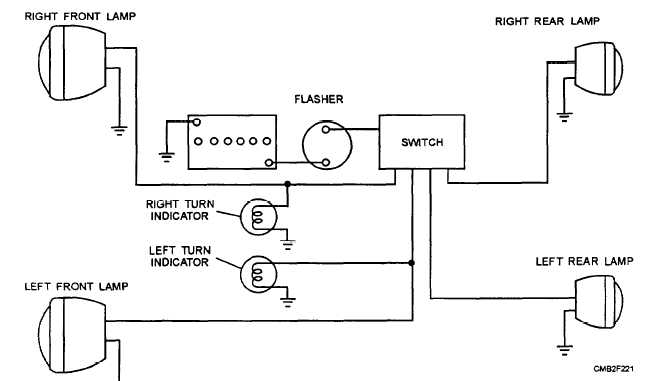Blackout lighting control switches are designed to prevent the service lighting from being turned on accidentally. Their operation is described in the "Headlight Switch" section of this TRAMAN.
TURN-SIGNAL SYSTEMS
Vehicles that operate on any public road must be equipped with turn signals. These signals indicate a left or right turn by providing a flashing light signal at the rear and front of the vehicle.
The turn-signal switch is located on the steering column (fig. 2-68). It is designed to shut off automatically after the turn is completed by the action of the canceling cam.

Figure 2-68. - Typical turn-signal switch.
A wiring diagram for a typical turn-signal system is shown in figure 2-69. A common design for a turn- signal system is to use the same rear light for both the stop and turn signals. This somewhat complicates the design of the switch in that the stoplight circuit must pass through the turn-signal switch. When the turn- signal switch is turned off, it must pass stoplight current to the rear lights. As a left or right turn signal is selected, the stoplight circuit is open and the turn- signal circuit is closed to the respective rear light.
The turn signal flasher unit (fig. 2-70) creates the flashing of the turn signal lights. It consists basically of a bimetallic (two dissimilar metals bonded together) strip wrapped in a wire coil. The bimetallic strip serves as one of the contact points.
When the turn signals are actuated, current flows into the flasher - first through the heating coil to the bimetallic strip, then through the contact points, then out of the flasher, where the circuit is completed through the turn-signal light. This sequence of events will repeat a few times a second, causing a steady flashing of the turn signals.
BACKUP LIGHT SYSTEM
The backup light system provides visibility to the rear of the vehicle at night and a warning to the

Figure 2-69. - Typical turn-signal wiring diagram.
Continue Reading